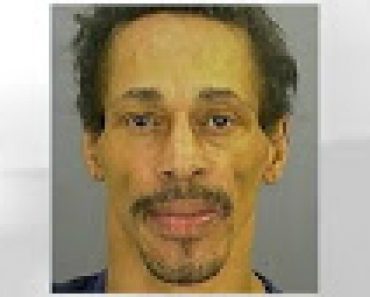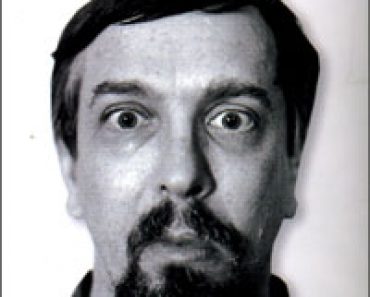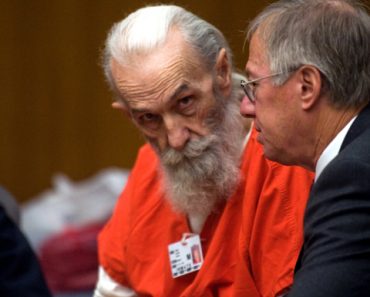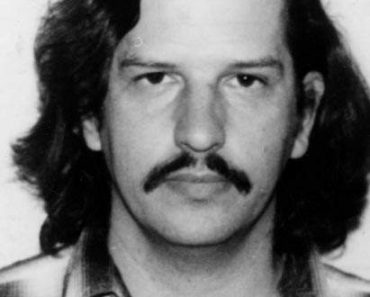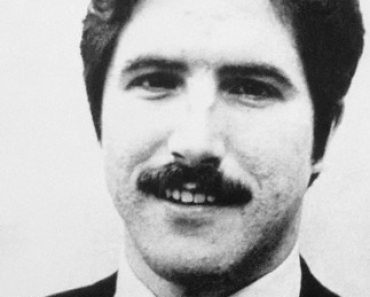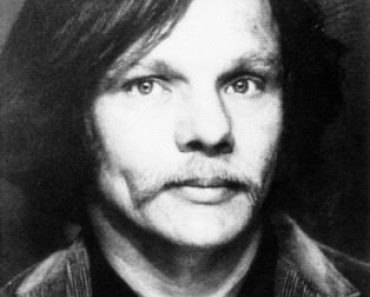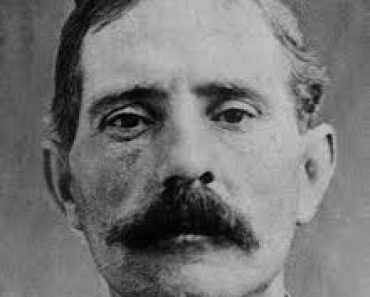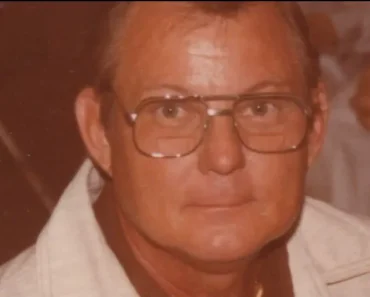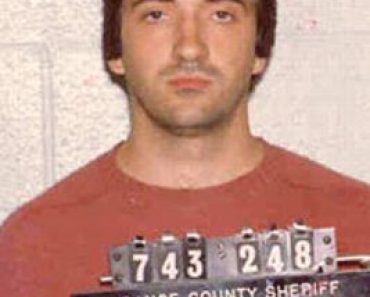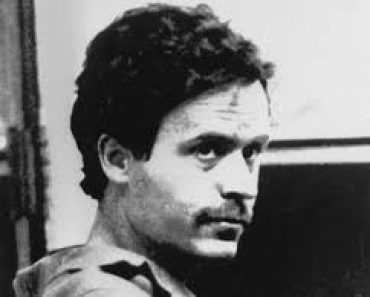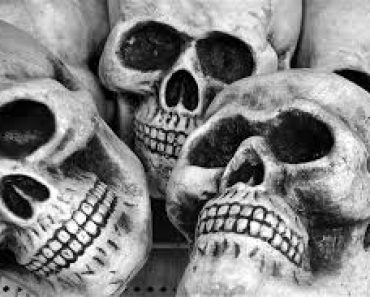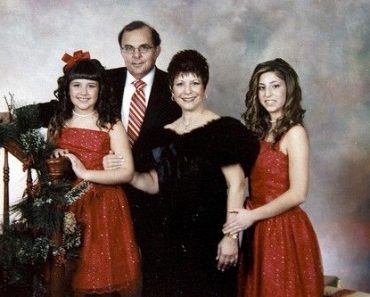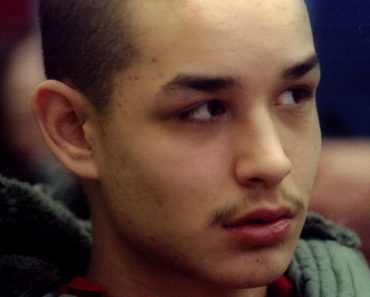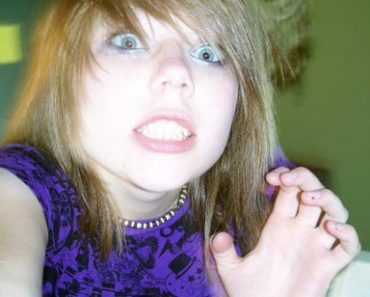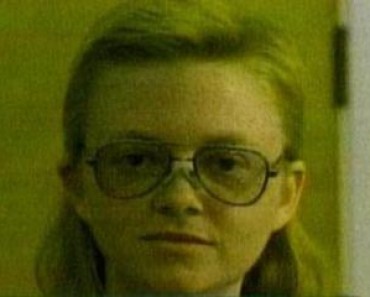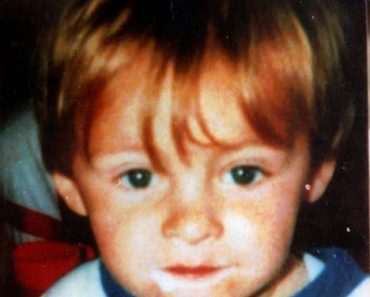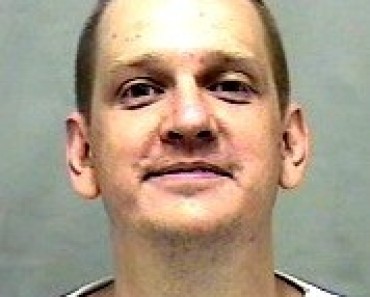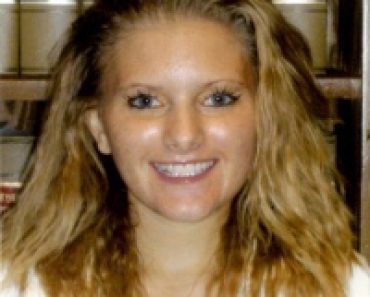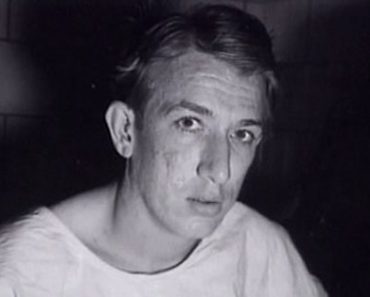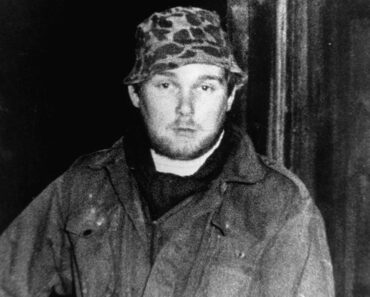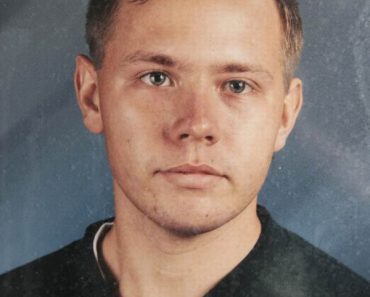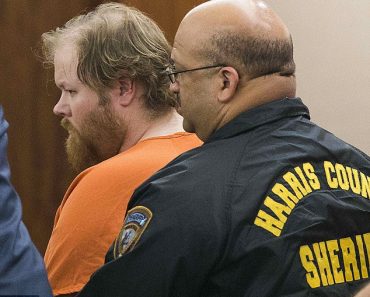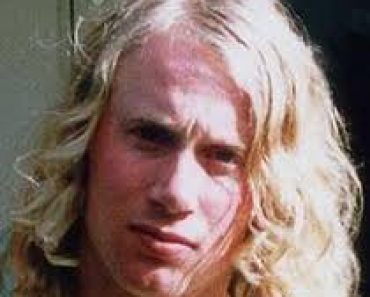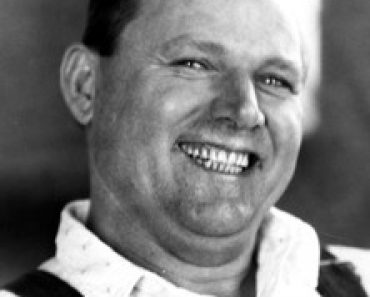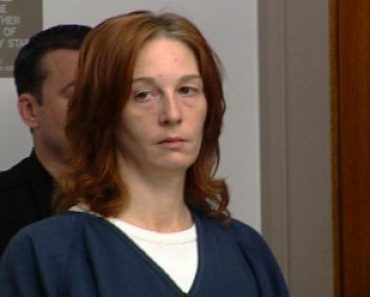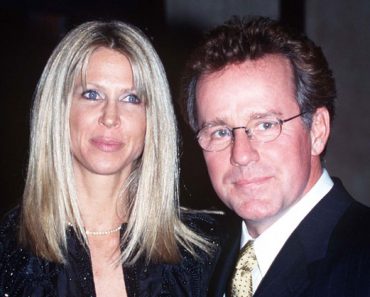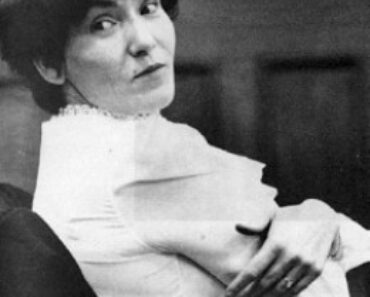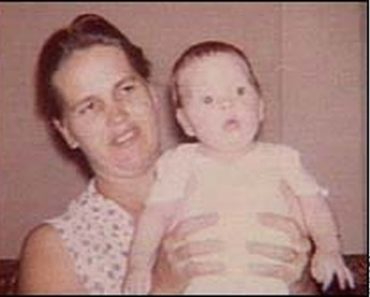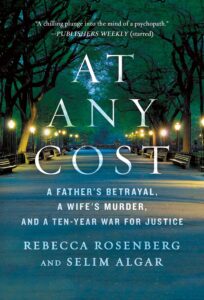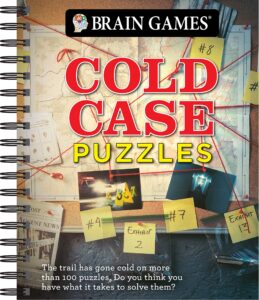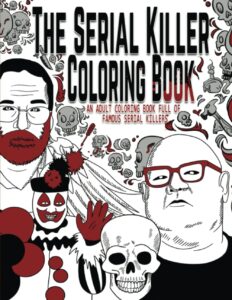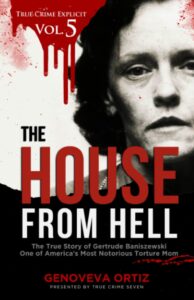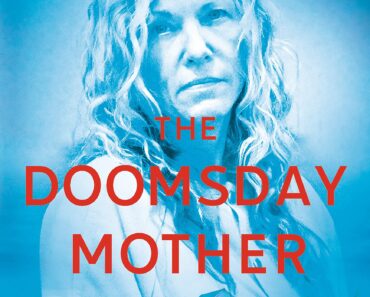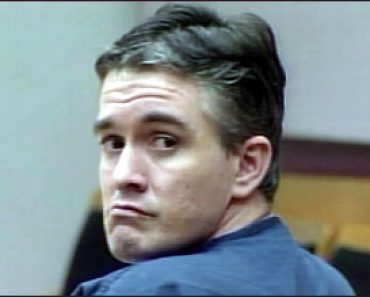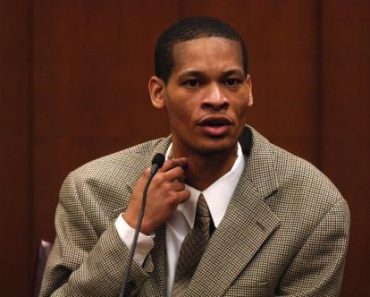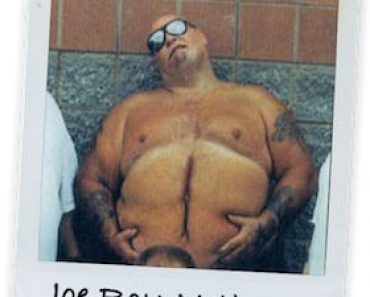Joel Rifkin | Serial Killer

Joel Rifkin
Born: 01-20-1959
New York Ripper
American Serial Killer
Crime Spree: 1989–1993
Imprisoned at: Clinton Correctional Facility, New York
Joel Rifkin
New York state troopers, Sean Ruane and Deborah Spaargaren, were patrolling Long Island’s Southern State Parkway at 3:15 a.m. on June 28th, 1993, when they spotted a Mazda pickup truck with no rear license plate. When flashing red lights failed to stop the driver, they used the loudspeaker, ordering the driver to halt. But he accelerated, speeding down the next off-ramp, into the streets of Wantagh.
The wild chase was on. Ruane and Spaargaren called for backup as they pursued their quarry at nearly 90 miles an hour. Five more patrol cars joined the convoy, sirens wailing, before the Mazda’s driver missed a turn in Mineola and crashed his truck into a telephone pole at 3:36 a.m.. He offered no resistance as police removed him from the pickup, frisked him for weapons and removed an X-acto knife from his pocket.
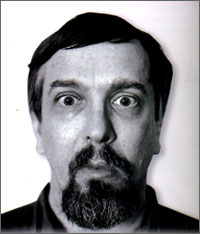
The driver’s license identified him as 34-year-old Joel David Rifkin, residing on Garden Street in East Meadow, Long Island. He was generally unkempt, and a thick layer of Noxema was smeared across his mustache. When told his truck had no rear license plate, Rifkin assured the officers it had been present when he left his home, some 40 minutes earlier. He had no explanation for the wild flight to avoid a minor traffic ticket, but the cause of Rifkin’s panic was revealed a moment later.
A Dead Woman
Drawn to the pickup’s bed by a foul odor, troopers peeled back a blue tarp and found a woman’s naked, decomposing corpse. She appeared to have been dead for several days. That explained Rifkin’s use of Noxema. It was a trick for handling corpses, to avoid their stench, portrayed by Hollywood two years earlier in the Oscar-winning Silence of the Lambs.
When asked about the body, Rifkin said, “She was a prostitute. I picked her up on Allen Street in Manhattan. I had sex with her, then things went bad and I strangled her. Do you think I need a lawyer?”
Booked for Murder
Joel Rifkin was booked at Hempstead, where homicide detectives launched an immediate interrogation. Officers staked out the house in East Meadow, where Rifkin lived with his sister and elderly mother. A telephone call from police told 71-year-old Jeanne Rifkin that her son had been detained after a traffic accident. The rest would be revealed to her on television, hours later, when detectives laid the outline of their case before the media.
Rifkin’s victim was identified as Tiffany Bresciani, a 22-year-old Louisiana native, tricking in Manhattan the past two years to feed her drug habit. During questioning, Rifkin described her death in clinical detail, but his emotional detachment was not the worst part of the confession. The murder, detectives soon realized, was not his first. In fact she was number 17.
article continued below
article continued below
Evidence
It was nearly 8 p.m. when authorities presented Jeanne Rifkin with a search warrant, scouring her two-story house for evidence against the man who appeared to be New York’s most prolific serial killer. When they left, six hours later, the searchers carried off at least 228 items linked to Joel Rifkin’s four-year murder spree.
His upstairs bedroom yielded 75 pieces of women’s jewelry, photographs Rifkin had taken of several unidentified women, various items of feminine clothing, makeup cases, a woman’s curling iron, wallets and pocketbooks, plus a mixed bag of ID cards. One driver’s license belonged to Mary DeLuca, found dead in Cornwall, New York, in October 1991. Another belonged to Jenny Soto, who had been fished out of the Harlem River in November of 1992. Rifkin’s bedroom reading material included a book on the unidentified Green River Killer and news clippings about the case of New York serial killer, Arthur Shawcross.
In Rifkin’s cluttered garage, detectives followed their noses to a reeking wheelbarrow, extracting three ounces of human blood. A pair of women’s panties lay on the floor, near a stockpile of rope and tarp. A chainsaw found in the garage was stained with blood and bits of human flesh. Neighbors recalled strange odors emanating from Rifkin’s garage, but they had assumed he stored insecticides there, for use in his garden and landscaping business.
They were wrong. It was the smell of death and it would linger long after the source had been removed.
Joel Rifkin
Joel Rifkin was born on January 20, 1959, the son of unwed college students who were not prepared to start a family. A childless couple from Upstate New York, Bernard and Jeanne Rifkin, adopted him on Valentine’s Day and named him Joel David. The Rifkin’s also adopted a daughter, Jan, in 1962. Three years later they moved to East Meadow, Long Island, and Joel entered first grade at Prospect Avenue Elementary School.

It was hell from day one. Something about Joel Rifkin set him apart. An undefined quality that made him an immediate outsider, natural prey to all manner of bullies. Classmates dubbed him “The Turtle,” after his slouching posture and slow gait. Excluded from team sports and neighborhood games, Joel was the butt of every prank and sadistic joke. Bullies assaulted him in school and pulled his pants down, stole his lunch and books, and harassed him constantly. He was also an academic failure, suffering from undiagnosed dyslexia despite a tested IQ of 128.
Joel’s poor grades embarrassed his father, a member of the East Meadow School Board. He raged at Joel, “Why can’t you do anything to please me?” Jeanne Rifkin shared her love of gardening and photography with Joel oblivious to his torment by peers.
From Bad To Worse

Things went from bad to worse at East Meadow High School. Except for his grades, Joel was the stereotypical nerd, in glasses and high-water pants with white socks. One of the bullies who harassed him later called Rifkin “an abuse unit. He was subtly obnoxious. Even his presence annoyed you.”
Rifkin joined the track team, in an effort to fit in, and was rewarded with the nickname “lard ass.” Teammates hid his clothes and shoved his head into a toilet bowl. Instead of fighting back, Rifkin invited them to watch TV and drink beer at his house. “We used him, to be blunt about it,” one of them recalled years later. “He was easy to make fun of.”
A failure in athletics, Rifkin joined the yearbook staff, and promptly had his camera stolen. Undeterred, he slaved to put the senior yearbook out, but he was excluded from the year-end wrap party. That left him “absolutely devastated,” in his mother’s words, but there were other compensations. Joel’s parents gave him a car that year, and he used it to troll for prostitutes, first in nearby Hempstead, later in Manhattan. According to Robert Mladinich in From the Mouth of the Monster, Joel’s fantasies included “some bondage” and “some rape,” plus “a gladiator type thing with two girls that would fight to the death.” In some daydreams he raped and stabbed women, but his fantasy victims were silent, “just passive about it.” After a 1972 viewing of Alfred Hitchcock’s Frenzy, loosely based on London’s “Jack the Ripper” homicides of 1964-65, Joel started fixating on strangling prostitutes.
article continued below
article continued below
Life Only Got Worse
Real-life romance eluded Joel Rifkin, for the most part. One high school date was scuttled after fellow track team members trapped him in the gym and pelted him with eggs, forcing Joel to call his father for help. Another time, Rifkin made it as far as a local pizza parlor with his date, but the same bullies chased them out, pursuing the couple on foot until Joel and the girl found refuge in a public library.
Graduating near the bottom of his class in 1977, Joel Rifkin looked forward to college and adulthood. Life could only get better, he reasoned. But, in reality, the worst was yet to come.
Rifkin’s first attempt at higher education took him to Nassau Community College, on Long Island. Bored and restless, he cut classes habitually, completing only one course in the 1977-78 academic year. Joel Rifkin transferred to the state university at Brockport, a Rochester suburb, in fall 1978. He enjoyed the photography club but turned in his usual lackluster academic performance over the next two years, before dropping out in 1980. Rifkin had his only real girlfriend in Brockport, but the relationship went nowhere, his paramour recalling Joel as “sweet, but always depressed.” Back at home with his parents, Rifkin tried Nassau Community College again, attending erratically, earning only 12 credits by the time he finally quit in 1984.
Joel Rifkin
Throughout the 1980s, Rifkin worked a series of odd jobs around Long Island, seldom staying long at any. Poor hygiene, chronic absenteeism and general ineptitude blocked the road to advancement. His employer at a local music store described Joel as “a total piece of work. This guy couldn’t even count to 10.” In his down time, idling between jobs and classes, Joel Rifkin dreamed of becoming a famous writer, churning out fragments of bleak poetry. He maintained his interest in photography and horticulture, but failed to make either a paying proposition. Joel left his parents several times, renting small apartments, but he was never gone long, always moving home again when his latest job fell through.
“I couldn’t put two nickels together,” Rifkin recalled of those years, and most of what he did earn went to prostitutes. “The whole focus of my life,” he later said, “was on the streets.” But even there he proved inept. He was robbed by hookers or their pimps at least a dozen times. One girl duped him twice, using the same ruse both times to flee with his cash before sex.
Rifkin’s father was chronically ill. A heavy smoker, already afflicted with emphysema, Bernard was diagnosed with prostate cancer in fall 1986. Weary of the pain by February 1987, he took a massive dose of barbiturates and died after four days in a coma. Joel delivered a eulogy at his father’s funeral, moving the mourners to tears, and deepening his own depression.
The Arrest of Joel Rifkin
Joel Rifkin was arrested in Hempstead, in August of 1987, after soliciting sex from an undercover policewoman. He escaped with a nominal fine. Instead of keeping him away from prostitutes, the incident made him more devious.
In 1988 Rifkin enrolled in a two-year horticulture-study program at the State College of Technology in Farmingdale, New York. For the first time in his life, he made straight A’s for two consecutive semesters, rewarded by selection for an internship at the prestigious Planting Fields Arboretum in Oyster Bay, New York.
The appointment was an honor and it had an unexpected bonus. Joel found himself strongly attracted to one of the other interns. But, while he shadowed her at every opportunity, he never found the nerve to ask her out. Instead, he concocted an elaborate fantasy affair, frustrated beyond endurance when she failed to reciprocate his secret passion.
It was finally too much. Years of pent-up anger and humiliation craved release. Rifkin had reached the detonation point. All he required now was a target.
article continued below
article continued below
Losing Control
Despite his history of morbid fantasy, Joel Rifkin would later claim he had to plan the murder of his first victim, in March of 1989. Rifkin acknowledged that his violent mental images were “a little more intense than regular” at that time. His mother chose that month to travel out of state, leaving Joel alone in their East Meadow house.
Cruising Manhattan’s East Village for hookers one night, at about 10 p.m., he selected a young woman remembered only as “Susie.” She was a hard-core drug addict, demanding several stops to purchase crack before they drove back to Long Island. After listless sex, Susie again asked Joel to take her out in search of drugs. Instead, he picked up a souvenir howitzer shell and beat her furiously. “I just lost control,” he said later. “I stopped only when I got tired.”
Susie was still alive, however, and she fought back when he tried to move her, biting one of Rifkin’s fingers deeply before he strangled her to death. After wrestling her body into a plastic trash bag, Rifkin cleaned up the blood and signs of combat in his living room, then lay down and slept for several hours as if nothing had happened. Upon waking, he dragged Susie down to the basement, draped her body across the washer and dryer, then used that makeshift operating table to dismember her corpse with an X-acto knife. In his mind, the grim task was “reduced to biology class.” To foil identification, Rifkin severed Susie’s fingertips and pulled her teeth with pliers, then jammed her severed head into an old paint can. The other parts went into garbage bags and then into his mother’s car.
Disposing of Susie
Rifkin drove the body parts across the state line to New Jersey, dropping the head and legs in the woods near Hopewell. Doubling back from there, he returned to Manhattan, pitching the arms and torso into the East River. Joel Rifkin believed his victim would never be found. But, he had been a little careless.
On March 5th in 1989, a member of the Hopewell Valley Golf Club sliced his ball into the woods along the seventh green and found the can containing Susie’s head. Rifkin suffered “a major anxiety attack” after learning that Susie was HIV positive, following the case as police prepared artist’s renderings of the victim in life and checked them against a list of 700 missing women. But Susie has never been identified. Her case remained unsolved until Joel Rifkin confessed to it in 1993.
Second Victim
Joel waited more than a year to claim his second victim. He was vague on dates, different reports placing the crime 14 months after Susie’s murder, or late in 1990. The victim was prostitute Julie Blackbird, selected for her “pseudo-Madonna look.” Joel Rifkin drove her home to East Meadow when his mother was again out of town, and they spent the night together. At about nine the next morning, Rifkin recalled “completely bugging out,” beating Blackbird with a heavy table leg before he strangled her. When she was dead, he considered raping her corpse in conscious emulation of serial killer Ted Bundy, but the prospect repulsed him.
Determined not to bungle the disposal this time, Joel Rifkin went out to purchase cement and a large mortar pan. He dismembered the corpse as before, placing the head, arms and legs in buckets weighted with concrete. The torso filled a milk crate by itself. Driving into Manhattan, he consigned Blackbird’s head and torso to the East River, then dropped her weighted arms and legs into a Brooklyn barge canal. The remains were never found. We know Blackbird’s fate today only from Rifkin’s confession, and from her diary stashed in his bedroom.
Murder was now easier and Joel Rifkin was anxious to play the deadly game again.
Working Girls Became The Target
Rifkin started his own landscaping business in April 1991, renting space at a local nursery to store his equipment. It was a half-hearted effort at best. He complained to his landlord, “I keep losing all my customers,” and by summer he was falling behind on his rent. The obsession with murder had consumed his life and he began using the rented “job site” as a way station for corpses in transit.
Barbara Jacobs was the next to die. barbara was a 31-year-old addict with arrests on her record for auto theft and prostitution. Joel Rifkin picked her up on July 13, 1991, and took her home to East Meadow for sex. When she fell asleep, he clubbed her with the same table leg he had used on Julie Blackbird, then finished the job by manual strangulation. Put off by the thought of another dismemberment, Rifkin wrapped Jacobs in plastic, folded her into a cardboard box, and placed her in the back of his mother’s Toyota pickup. He drove to the Hudson River, dropping her into the water near a cement plant. She was found hours later by firefighters on a training exercise, but this time, Joel Rifkin reported, “It didn’t even faze me.”
The coroner blamed her death on a drug overdose, and Jacobs was buried in Potter’s Field cemetery, unidentified until Joel Rifkin confessed her murder two years later.
article continued below
article continued below
Mary Ellen
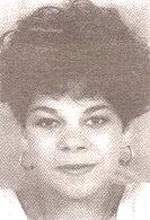
Crack addict Mary Ellen DeLuca, a 22-year-old Long Island native, was last seen alive at 11:00 p.m. on September 1, 1991, when she left a group of friends to earn the price of her next fix. Joel Rifkin found her on Jamaica Avenue in Queens and drove her around New York until sunrise, shelling out $150 for drugs at various stops. They wound up at a cheap motel, DeLuca first balking at sex and demanding more dope, then rushing through the act, complaining all the while. At some point in the litany, Rifkin asked DeLuca if she wanted to die, and she allegedly said yes. As he strangled her, Rifkin recalled, “She did nothing, just accepted it.” He remembered her murder as “one of the weird ones.”
It also left Rifkin with a new problem. Afraid to drag the corpse out in broad daylight, he drew inspiration from Hitchcock’s Frenzy and went out to purchase a cheap steamer trunk, squeezing DeLuca inside it. From the motel, he drove upstate to Orange County and left DeLuca’s body at a rest stop outside Cornwall, near West Point. She was found on October 1, nude except for a brassiere, without ID. Decomposition made it impossible to determine a cause of death, and she was buried nameless, unidentified until June 1993.
The East River
Rifkin’s selection process was erratic, sparing most of the hookers he patronized on a near nightly basis, prompting him to kill others on a whim. On the September night he picked up 31-year-old Yun Lee, a Korean native he had been with before, she was his second prostitute in an hour. That may explain his failure to perform as Lee went to work. He struck her on impulse, strangling her while she “mouthed something about making a big mistake.” It was Rifkin’s first murder of someone he knew beforehand, and he experienced fleeting remorse. “Actually,” he later said, “I thought I liked her.”
Rifkin wedged Lee into the same trunk he’d used for Mary DeLuca and dropped her in the East River. She was found on September 23rd, eight days before DeLuca, floating past Randalls Island, at the Harlem River’s mouth. Lee’s ex-husband identified the body, sparing her from an unmarked grave.
55 Gallon Drums
Joel Rifkin could not recall the name of “number six,” murdered a few days shy of Christmas in 1991. He picked her up on West 46th Street in Manhattan and strangled her in his car during oral sex, describing the event as “very quick.” Afterward, he drove back to Long Island with the body slumped beside him, concealing her under a tarp at his rented workplace. Next, he drove to a recycling plant in Westbury, where he had once worked part-time, and helped himself to a 55-gallon oil drum.
There was ample room for Jane Doe in the barrel, safely hidden for their ride to the South Bronx, where Rifkin found a district rife with junkyards and rolled her, once again, into the East River. About to leave, he was confronted by patrolmen who accused him of illegal dumping, but Joel persuaded them he was collecting junk instead. They let him go with a warning.
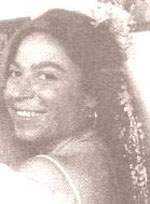
The oil drum worked so well for Joel Rifkin that he purchased several more for use as makeshift coffins. He used the next one on Lorraine Orvieto, a 28-year-old manic-depressive who tried to control her mood swings with cocaine. The habit was expensive and she tricked to keep herself supplied. It was a life far removed from her affluent Long Island home where she’d been a high school cheerleader.
Rifkin found Orvieto on December 26, 1991, in Bayshore, Long Island. He parked near a schoolyard fence and strangled her while she performed oral sex, discovering her HIV-positive status when he found a bottle of AZT in her purse. He kept the pills, along with her jewelry and ID, as souvenirs of the kill. Back at the landscaping lot, Rifkin stuffed her into an oil drum, drove her body to Brooklyn and dropped it into Coney Island Creek. She was found by a fisherman on July 11th in 1992, two months before her family filed a missing person’s report.
Even the parents of his victims didn’t seem to miss Joel Rifkin’s prey. It was a serial killer’s dream come true.
article continued below
article continued below
Hunting Again
One week after he killed Lorraine Orvieto, on January 2nd, 1992, Joel Rifkin went hunting again. At 39, Mary Ann Holloman was his oldest victim, an addict who sewed personalized G-strings for strippers when she wasn’t working the streets. Rifkin drove her to the same parking lot where he had taken Yun Lee and strangled her during fellatio. Later, he recalled the act as “very automatic. Not much with that one.” He followed the same disposal procedure as with Orvieto: back to Long Island, the oil drum and Coney Island Creek.
An anonymous caller reported Holloman’s floating remains to police on July 9, 1992, two days before Orvieto’s corpse was found. Unlike Orvieto, Holloman was identified from dental records and returned to her family for burial. Two floaters in as many days suggested a serial killer at large, but New York police had their hands full with 2,000 murders a year in those days and junkie prostitutes were never high priority.
Joel Rifkin’s ninth victim, ironically, surfaced before numbers seven and eight. He was vague on the details in later confessions, unable to recall the woman’s name, if he had ever known it. He remembered her tattoos, a pickup in Manhattan, and the way she fought for life when he began to strangle her. She followed Mary Holloman, sometime that winter, dismembered remains consigned to the last of Rifkin’s oil drums. He dropped her into Brooklyn’s Newtown Creek, where she was spotted floating with the current, foot protruding from the rusty barrel, on May 13, 1992. The cocaine in her system prompted detectives to brand her a drug “mule,” killed accidentally by the rupture of drug-filled condoms in her stomach. Police learned their mistake a year later, when Joel Rifkin confessed to her slaying, but “number nine” remains anonymous, the last Jane Doe.
Back To School
Joel Rifkin went back to school in spring of 1992, taking uncredited classes at SUNY Farmingdale. His landscaping business had folded by then, his landlord clamoring for $700 in overdue rent. As before, Joel cut most of his classes, focused for the most part on repairing his truck, renting video porn and trolling for prey.
Joel found Iris Sanchez, a 25-year-old crack addict, working First Avenue on Mother’s Day weekend. Rifkin was AWOL from his part-time job at an East Meadow liquor store, looking for trouble. He picked Sanchez up in broad daylight, driving her to a Manhattan housing project “down by where Macy’s has the fireworks.” After strangling Sanchez during sex, he drove her corpse across the Brooklyn Bridge, seeking a drop-off point. The site he chose was an illegal dump, 200 feet off Rockaway Boulevard, within sight of JFK International Airport. Rifkin wedged the body underneath a rotting mattress, first relieving Sanchez of her watch and other jewelry. She would not be found until June 1993, when Joel Rifkin himself drew detectives a map.
Anna
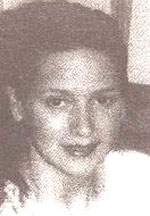
At age 33, Anna Lopez had three children by three different fathers, but she worked the streets primarily to feed her own cocaine addiction. Joel Rifkin found her on May 25, 1992, Memorial Day, working Atlantic Avenue in Queens, and retired to a nearby residential street for sex. After strangling Lopez in his car, Rifkin drove through the night to Brewster, in Putnam County, and dumped her corpse along I-84. A motorist stopping to relieve himself found Lopez the next day. She was missing one earring, later found in Rifkin’s bedroom stash.
Joel Rifkin
Violet O’Neill, a 21-year-old prostitute, was the first victim Joel Rifkin had taken home to East Meadow in nearly a year. He picked her up in the city, strangled her after sex at his mother’s house and dismembered her corpse in the bathtub. Rifkin consigned her remains to the waters surrounding Manhattan. Her torso surfaced in the Hudson River, wrapped in black plastic, while her arms and legs were found in a discarded suitcase.

Mary Catherine Williams, 10 years older than O’Neill, had been a high school homecoming queen and college cheerleader in her native North Carolina. Married to a pro football player in 1986 and divorced the following year, she had come to New York in search of an acting career, but wound up doing drugs and living on the streets. Joel Rifkin had ‘dated’ Williams twice and enjoyed “a great time” before the final pickup on October 2, 1992. He bought Williams a fix that night, then tried to choke her when she dozed off in his mother’s car. She woke up fighting for her life, kicking the gear-shift hard enough to snap it off before Joel smothered her.
After a struggle to get the car started and moving, Rifkin drove Williams to Yorktown, a Westchester suburb, where she was found on December 21, 1992. He kept her credit cards and a wicker handbag filled with costume jewelry. So much, in fact, that the amount would briefly cause detectives to inflate his body count. Williams would fill another nameless pauper’s grave until Joel Rifkin confessed to her murder, six months after she was found.
Ending 1992

Jenny Soto was the last victim of 1992, a 23-year-old addict whose many trips to detox never turned her life around. Joel Rifkin picked her up at about 11 p.m. on November 16, near the Williamsburg Bridge in lower Manhattan. Strangled in Joel’s pickup after sex, she proved “the toughest one to kill,” he said, breaking all 10 fingernails as she clawed Rifkin’s face and neck. Winded from the battle, Rifkin claimed her bra and panties, earrings, ID cards and drug syringe as trophies for his cache. He rolled Soto into the Harlem River, near the spot where Yun Lee had been found 14 months earlier. Discovered the following day, Soto was identified from fingerprint records of her last arrest, police initially suspecting her ex-con ex-boyfriend of the murder.
Soto’s grim fight for life gave Joel Rifkin pause. Her slaying capped his own frenzied “acceleration period” and left him with embarrassing wounds to explain. Joel would not strike again for 15 weeks, and when he did, he would take better care to hide his tracks.
The Final Rampage
Rifkin’s first victim of 1993 was Leah Evens, a 28-year-old who lived with her mother in Brooklyn. Abandoned by the father of her two children, Evens found solace in drugs and worked the streets to keep herself “well.” Joel Rifkin found her tricking on February 27, 1993, stopping for sex in an abandoned parking lot. Evens started to undress, then balked, demanding greater privacy. Rifkin refused, strangling her when she started to cry.
Afterward, he drove Evens to the far eastern end of Long Island and buried her in the woods, the only one of his victims who rated a shallow grave. Hikers found her on May 9 after they spied a withered hand protruding from the ground. A forensic anthropologist was hired to reconstruct the victim’s face, but Joel Rifkin confessed before the model was finished. Police found Even’s driver’s license at his home.
The next to die, Lauren Marquez, was a 28-year-old addict and prostitute, hooked on drugs before she left her native Tennessee for New York City. Joel Rifkin picked her up on April 2nd, 1993, while she was working Second Avenue. They drove to a point near the Manhattan Bridge, Rifkin clutching at her throat without the usual preliminaries. Briefly distracted by a man who passed the car walking a dog, he almost let Marquez escape. She fought him, resisting strangulation until he snapped her neck. Rifkin dumped her body in the Suffolk County pine barrens, where she lay undiscovered until his arrest. Besides a broken neck, Marquez had fractured ribs, though Rifkin claimed he could not remember hitting her. She was identified through DNA testing on August 20, 1993.
article continued below
article continued below
The Last Victim
Rifkin’s last victim, Tiffany Bresciani, was another southern girl. She hailed from Metairie, Louisiana, and had been drawn to New York by dreams of acting or dancing. Instead, she wound up hooked on heroin, performing for strangers in strip clubs and cars. By the time Joel Rifkin found her, in the predawn hours of June 24, 1993, she was his second hooker of the night. His fourth within two days. Rifkin picked her up on Allen Street and drove her to the New York Post’s parking lot, where he strangled her at 5:30 a.m. From there, he drove back to East Meadow, stopping at stores along the way for rope and tarp, while Bresciani lay sprawled in the backseat of his mother’s car. By the time he got home, she was swaddled in tarp and concealed in the trunk.
Joel Rifkin had just arrived home when his mother demanded her car keys and embarked on a 30-minute shopping trip, with the corpse still in the trunk. Rifkin had no time to move the corpse, but his mother never knew. Relieved of his “little anxiety attack,” Joel moved Bresciani into the cluttered garage, leaving her body in a wheelbarrow. Then, as if in a fugue state, he spent the next three days working on his pickup, ignoring the summer heat and pervasive reek of decomposing flesh. He was on his way to dump the corpse near Melville’s Republic Airport, some 15 miles north of his house, when Troopers Ruane and Spaargaren noted his lack of a rear license plate.
The killing game was over, but the quest for justice had only begun.
17 Murders
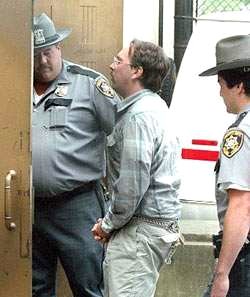
Homicide detectives began interrogating Joel Rifkin at 8:25 a.m. on June 28, 1993. They questioned him for eight hours, but for some reason never recorded the sessions. Rifkin later claimed that he asked for a lawyer “at least 20 times” and was always refused, investigators telling him he couldn’t speak with counsel until “you give us one more homicide.” The written transcript of his interview, presumably reconstructed from memory, suggests that Joel Rifkin was offered a lawyer and declined.
He described all 17 murders in the absence of counsel, writing out the names he remembered, sketching maps to help police find those victims still missing. Rifkin was dispassionate, referring to the murders as “events” or “incidents,” listing his victims by number. Mary Catherine Williams was “number 13,” Joel’s omission of her name confusing police and some reporters into citing Williams as an 18th victim. Their mistake made Rifkin laugh, explaining that the clumsy cops had counted Williams twice.
Back in East Meadow, Jeanne Rifkin found officers circling her house by mid-morning. Confronting them, she was first told that Joel had been detained after a traffic accident, then that he was jailed for “a crime” which the officers refused to describe. A 9 a.m. media report cleared up the mystery, and Jeanne phoned her lawyer, who referred her to criminal attorney Robert Sale. Sale called the state police at 3:30 p.m. and ordered them to cease interrogation of his client, but the questioning continued in Sale’s absence for at least another hour, until Joel Rifkin completed his grim recital of death.
Joel Rifkin
Joel’s memory was far from perfect. He had apparently forgotten the date of his father’s death and told police he murdered Barbara Jacobs in August 1991, although her body had been found in July. He had forgotten names of several victims and knew others only by their “street names.” He directed police to the remains of Lauren Marquez and Iris Sanchez, found five hours apart on June 29, but Julie Blackbird was gone forever.
Robert Sale met his new client for the first time at 9 a.m. on June 29th and Rifkin complained that police had taken his glasses and left him with a migraine headache, unable to function. Thirty minutes later, Sale and Joel Rifkin appeared before Judge John Kingston, entering a preliminary plea of not guilty on the Bresciani murder. Sale waived application for bond, knowing it was hopeless, but won a two-week postponement of formal arraignment. Joel Rifkin was transferred at once to the Nassau County Correctional Facility in East Meadow. The prison van carried him past the high school where he had graduated 16 years earlier.
Joel Rifkin Pleads
Arraigned for the Bresciani homicide on July 15, 1993, Joel Rifkin repeated his plea of not guilty. His lawyer Bob Sale sought to have Rifkin’s confession thrown out on grounds that police could not prove he was ever advised of his rights. Failing that, he sought to have the various murder charges consolidated in one Nassau County trial, hoping a hometown jury would be more inclined to find Rifkin not guilty by reason of insanity. A formal suppression hearing was scheduled for November, but Joel Rifkin had other plans. Flexing his ego, he fired Sale and retained two new lawyers: former Nassau County assistant district attorney Michael Soshnick and his partner, John Lawrence.
The suppression hearing convened on November 8, 1993, Soshnick and Lawrence picking up where Sale left off in the effort to quash Rifkin’s confession. They also sought to suppress his initial admission of Bresciani’s murder, made at the time of his arrest, while claiming that police had lacked sufficient probable cause for a legal search of Rifkin’s truck. Midway through the hearing, Assistant District Attorney Fred Klein offered Joel Rifkin a sweetheart deal–46 years to life on all 17 murders, in return for a blanket guilty plea.
But Rifkin refused the bargain, apparently convinced that he would be acquitted on grounds of insanity. As the hearing dragged on, Rifkin’s lawyers alienated Judge Wexner by Soshnick repeatedly arriving late for court and unprepared and Lawrence missing whole days. By March 1994 Wexner had heard enough to reject the various defense motions outright and hold Rifkin for trial, scheduled for mid-April. Joel Rifkin responded to the news by firing Soshnick on the spot, leaving Lawrence, a lawyer with no criminal experience, to wage the battle alone.
The Trial
Jury selection for Rifkin’s first trial, before Wexner, began on April 11, 1994. A panel of seven men and five women was seated nine days later, with opening arguments begining on April 20. Fred Klein described Rifkin as a sexual sadist who relished his victims’ suffering: “He got caught red-handed, and now he’s using and abusing the concept of mental illness.” Lawrence called his client a paranoid schizophrenic who “lived in the twilight zone,” overwhelmed by violent, irresistible compulsions “that took control of his life.”
Rifkin, for his part, snored through much of the prosecution’s case, a performance Lawrence blamed on allergies to the bologna sandwiches he ate in jail. Long Island psychiatrist Barbara Kirwin deemed Rifkin’s psychological test results “the most pathological” she had seen in 20 years of practice. Appearing for the state, Dr. Park Dietz–earlier a prosecution witness against Arthur Shawcross, Jeffrey Dahmer and John Hinckley–found Rifkin “sick but not insane. He knew exactly what he was doing, and he did it.”
Jurors agreed with Dietz, deliberating briefly on May 9 before they convicted Joel Rifkin of murder and reckless endangerment. Wexner gave Rifkin 25 years to life for murder, plus two and one-third to seven years on the lesser charge.
article continued below
WickedWe Suggested
article continued below
The Ruling
Even before he was sentenced, on May 9, 1994, Rifkin was transferred to Suffolk County, pending trial for the Evens and Marquez slayings. Another suppression hearing failed to quash his confession, whereupon Joel Rifkin pleaded guilty on both counts, receiving two more consecutive terms of 25 years to life in prison. In November, he pleaded guilty to the Sanchez homicide in Queens and to three more counts in Brooklyn: victims Orvieto, Holloman and the “Jane Doe” killed in 1992. By January 1996, Rifkin was scheduled to serve at least 183 years for seven slayings, with 10 counts outstanding.
Judge Robert Hanophy, passing sentence in the Sanchez case, told spectators: “It is not in my power to give Mr. Rifkin the sentence he deserves. In case there is such a thing as reincarnation, I want you to spend your second life in prison.”
Joel Rifkin is now serving 203 years to life in the Clinton, N.Y. correctional facility. He would be eligible for parole only in 2197, at the age of 238.

source: murderpedia – as told by Michael Newton | allthatsintersting | Murderpedia |
This site contains affiliate links. We may, at no cost to you, receive a commission for purchases made through these links

